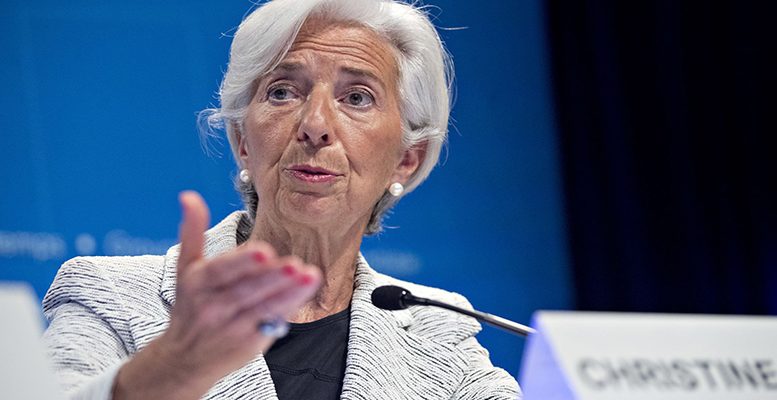Gilles Moëc (AXA Group) | We knew that the European Central Bank (ECB) was very divided in the run-up to the Governing Council meeting on September 12th, but two weeks later the fallout of what must have been a very fractious discussion is still very much here. The latest examples are Banque de France’s Governor Villeroy de Galhau revealing publicly he was opposed to resuming quantitative easing (QE), and board member Lautenschlaeger announcing her resignation by year end. News of dissent will further dampen the psychological, confidence-boosting effect of the last batch of ECB easing, but the crucial issue is obviously how this will affect the ECB’s monetary stance once Christine Lagarde takes over in November. From that angle, we think any consequences may take until the middle of next year to emerge.
Let us deal first with the personnel changes. Two board members will need to be replaced at the beginning of next year: Benoit Coeure (who is reaching the end of his term) and now Sabine Lautenschlaeger. Benoit Coeure was widely reported to have opposed the resumption of QE as well (he disagreed with the timing according to the Financial Times on Friday). The only candidate for his replacement declared so far is Fabio Panetta, from Banca d’Italia. Although he has been focusing on banking issues for quite some time so that his views on monetary policy have not been aired often, we would rank him as more dovish than the Frenchman. Sabine Lautenschlaeger was on the far end of the hawkish spectrum. Even a replacement coming from the Bundesbank is unlikely to “out-hawk” her. It is thus not obvious that the general stance of the board will change that much.
In the meantime, the central bank can hardly make any new decisions before it has had enough time to assess the impact of the September package. Tiering will start only at the end of October, and quantitative easing in November. Some technical decisions will need to be made by then – in particular the breakdown of the asset purchases between the public and the private sector – but nothing crucial. We also think that the ECB will be reluctant to consider it can effectively assess the full effect – and potential shortcomings – of its September package before the results of the next Targeted Longer-Term Refinancing Operation (TLTRO) in December.
By that time, the ECB will have a new boss. Draghi lost no time to make his mark on monetary policy, cutting rates on his first Council meeting as President. But he had been in the room for several years as Governor of Banca d’Italia. At her confirmation hearing to the European parliament Christine Lagarde pledged to conduct a thorough strategy review of the ECB’s monetary policy. She may want to wait for the completion of this process before altering the current stance of the central bank. If history is a guide, the ECB likes to take its time when re-thinking its strategy. Last time it did, the process ran from December 2002 to May 2003, and we would argue that monetary policy was a walk in the park then relative to what it is now. The issues are more complex, and the array of choices much wider and controversial today. Assuming the review is launched at the end of this year, once the new President is in, we would be surprised to get hard decisions before mid-2020.
This is where, by the middle of next year, the backlash from the September package could hit. We think that anyway the central bank had used up its arsenal even under Draghi already. We made the point several times before: the crucial decision is on the “technical limits” to QE. The ECB’s latest package contained the maximum monthly quantum of bond buying consistent (just) with not removing the 33% limit on national central banks’ holdings of marketable public debt. If even this compromise approach was so contentious that Draghi himself did not manage to build a wide consensus around it, it would take a properly disastrous macroeconomic situation to tilt the ECB into pushing those limits. Given the mood at the Governing Council, the bar for this is probably higher today.
The ECB may face a credibility issue if by next summer, having completed its strategy review, inflation has not converged towards its target, but additional action is de facto impossible. The risk then is that the strategy review becomes a case of reverse engineering, in clear changing the definition of the inflation target (for instance with a range), to justify the practical impossibility for monetary policy to do more.
Of course, good news could come and help the ECB out of its current predicament. If we get a fast resolution of trade war and the world economy re-starts fairly quickly from the start of 2020, there may be a temptation at the Governing Council to put an end to QE after only a few months, to heal the divisions, provided core inflation accelerates a bit to justify such a move from a macroeconomic point of view. We think that in those circumstances the central bank would have to revise its forward guidance, so that the market does not start anticipating rate hikes too soon. But again, none of this is for immediate consumption.





